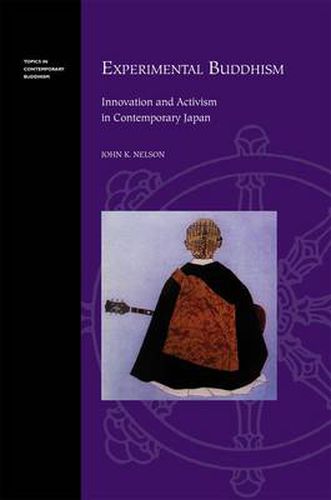Readings Newsletter
Become a Readings Member to make your shopping experience even easier.
Sign in or sign up for free!
You’re not far away from qualifying for FREE standard shipping within Australia
You’ve qualified for FREE standard shipping within Australia
The cart is loading…






Based on ethnographic fieldwork and archival research, it is one of the first studies to give readers a sense of what is happening on the front lines as a growing number of Buddhist priests try to reboot their roles and traditions to gain greater significance in Japanese society.
The book profiles innovative as well as controversial responses to the challenges facing Buddhist priests. From traditional activities (conducting memorial rituals; supporting residences for the elderly and infirm; providing relief for victims of natural disasters) to more creative ones (collaborating in suicide prevention efforts; holding symposia and concerts on temple precincts; speaking out against nuclear power following Japan’s 2011 earthquake; opening cafes, storefront temples, and pubs; even staging fashion shows with priests on the runway), more progressive members of Japan’s Buddhist clergy are trying to navigate a path leading towards renewed relevance in society. An additional challenge is to avoid alienating older patrons while trying to attract younger ones vital to the future of their temples.
The work’s central theme of experimental Buddhism provides a fresh perspective to understand how priests and other individuals employ Buddhist traditions in selective and pragmatic ways. Using these inventive approaches during a time of crisis and transition for Japanese temple Buddhism, priests and practitioners from all denominations seek solutions that not only can revitalize their religious traditions but also influence society and their fellow citizens in positive ways.
$9.00 standard shipping within Australia
FREE standard shipping within Australia for orders over $100.00
Express & International shipping calculated at checkout
Stock availability can be subject to change without notice. We recommend calling the shop or contacting our online team to check availability of low stock items. Please see our Shopping Online page for more details.
Based on ethnographic fieldwork and archival research, it is one of the first studies to give readers a sense of what is happening on the front lines as a growing number of Buddhist priests try to reboot their roles and traditions to gain greater significance in Japanese society.
The book profiles innovative as well as controversial responses to the challenges facing Buddhist priests. From traditional activities (conducting memorial rituals; supporting residences for the elderly and infirm; providing relief for victims of natural disasters) to more creative ones (collaborating in suicide prevention efforts; holding symposia and concerts on temple precincts; speaking out against nuclear power following Japan’s 2011 earthquake; opening cafes, storefront temples, and pubs; even staging fashion shows with priests on the runway), more progressive members of Japan’s Buddhist clergy are trying to navigate a path leading towards renewed relevance in society. An additional challenge is to avoid alienating older patrons while trying to attract younger ones vital to the future of their temples.
The work’s central theme of experimental Buddhism provides a fresh perspective to understand how priests and other individuals employ Buddhist traditions in selective and pragmatic ways. Using these inventive approaches during a time of crisis and transition for Japanese temple Buddhism, priests and practitioners from all denominations seek solutions that not only can revitalize their religious traditions but also influence society and their fellow citizens in positive ways.